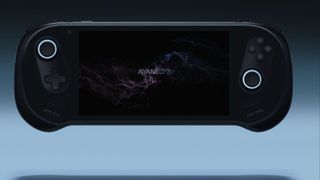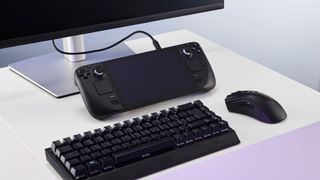Ayaneo’s New AMD Strix Point Handheld PC
This week marks an interesting juncture in the world of handheld gaming. The gaming landscape is shifting once again, as the OneXFly F1 Pro enters the preorder phase boasting a Strixpoint CPU and a hefty price tag exceeding $1,000. Adding to this frenzy, Ayaneo has unveiled its latest machine, the Ayaneo 3, also harnessing the power of AMD’s Strix Point APUs.
As reported by various tech outlets, this new handheld will come in two models: one sporting the Ryzen 7 8840U, already familiar to users of the Ayaneo Kun, and another fitted with the AMD Ryzen AI HX 370. The performance metrics are impressive; the former boasts 12 compute units (CUs) with RDNA 3-driven Radeon 780M integrated graphics, while the latter ramps it up to 16 CUs with the Radeon 890M, a true standout in integrated graphics technology.
Testing these devices earlier this year has led me to appreciate the leap the 890M represents. With a reported performance boost of 20% to 40% over its 780M predecessor, it’s evident that Ayaneo is setting its sights high. However, I feel the mainstream handheld gaming market is quickly saturating with similar specs - just look at the Acer Nitro Blaze 7, recently announced with the same Ryzen 7 8840HS chip.
 The next generation of handheld gaming awaits.
The next generation of handheld gaming awaits.
It’s a crucial moment for Ayaneo and its competitors. Expense remains a defining factor, and as we’re all too aware, the gaming community is selective about its investments. The race to innovate isn’t merely about stating the specs; it’s about presenting something truly captivating. CES 2025, just around the corner, promises a spotlight for gaming hardware, raising expectations for incredible reveals.
Overhyped or Game-Changing?
In discussions with fellow gamers and industry enthusiasts, the sentiment regarding these upcoming devices often borders on skepticism. James Bentley has pointed out that the marketing around these products might be straying into the territory of hyperbole. Take the OneXPlayer F1 Pro, the top-tier model, which starts at an eye-watering $1,899. With the Ayaneo having yet to disclose its price, one can’t help but wonder whether this hefty investment translates to a worthy gaming experience.
Here’s where my experience kicks in: I’ve spent countless hours on various handhelds, each promising an immersive experience, yet many fail to deliver on that promise. Features like battery life improvements and advanced screen tech are beneficial, sure, but they often feel like cosmetic enhancements rather than the groundbreaking innovations we crave.
 The evolution of portable play continues.
The evolution of portable play continues.
The future seems to hold exciting potential. Previously uncharted realms in gaming powered by devices like Intel’s forthcoming Lunar Lake handhelds could redefine the playground once again. But there’s an unmistakable tension in the air - if these companies don’t meet competitive pricing and provide robust functionality, we might simply witness another cycle of disappointment.
Conclusion
In conclusion, we stand at a precipice with these latest handheld devices. The innovations are tangible, yet the question remains: will they resonate with the gaming community? The reality is that if companies manage to price these models competitively while delivering on their performance promises, we may see a healthy increase in market traction for these devices. Each announcement we anticipate for the upcoming year will bring us closer to understanding whether these efforts are genuinely revolutionary or merely a reiteration of what we already have.
I’ll be keeping my eyes peeled for the big reveals at CES 2025 and beyond. What they demonstrate could either galvanize the community or simply reinforce the status quo of handheld gaming.


 Photo by
Photo by 











